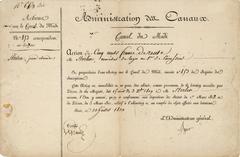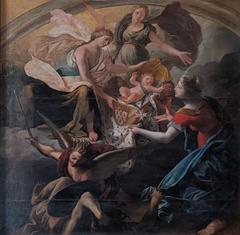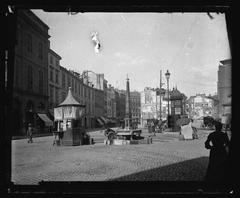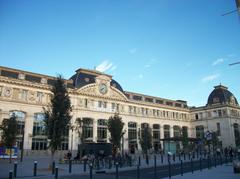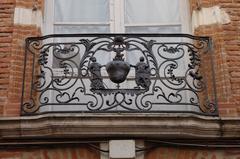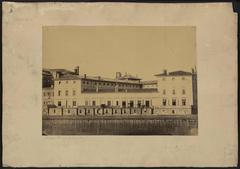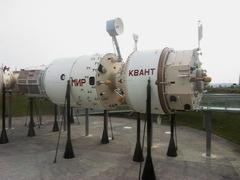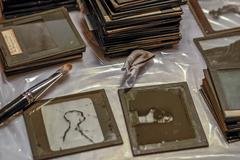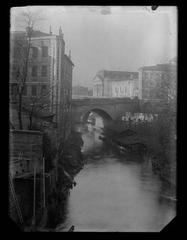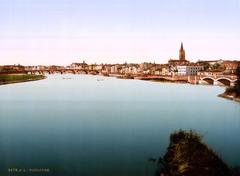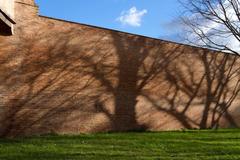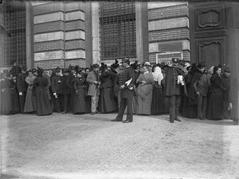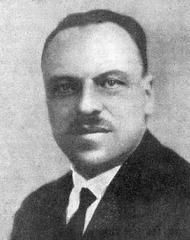AZF Toulouse Visiting Hours, Tickets, and Historical Significance Guide
Date: 04/07/2025
Introduction
The AZF site in Toulouse, France, is a landmark of both tragedy and resilience, offering insight into the city’s industrial past and its commitment to remembrance and renewal. Once the site of one of France’s largest fertilizer plants, AZF (Azote Fertilisants) became the location of a devastating industrial disaster on September 21, 2001, when an explosion involving hundreds of tons of ammonium nitrate caused widespread destruction and loss of life. Today, the site has been transformed into a place of memory and learning, reflecting Toulouse’s determination to honor victims while building a safer and more innovative future.
This comprehensive guide details the historical importance of the AZF site, the events and consequences of the 2001 explosion, and how the area has evolved since. It also provides practical information for visitors, including updated opening hours, ticket policies, directions, and tips for a meaningful visit. Drawing from authoritative sources such as the Institution of Chemical Engineers, the Toulouse Tourist Office, and detailed disaster reports (learncheme.com), this guide ensures visitors are well-informed and prepared.
Contents
- Early Industrial Development and the AZF Plant
- The 2001 Explosion: Timeline and Immediate Impact
- Human, Social, and Environmental Consequences
- Investigation and Legal Proceedings
- Transformation of the Site and Legacy
- Visiting the AZF Site: Hours, Tickets, and Tips
- The AZF Memorial and Memory Path: Purpose and Features
- Location, Access, and Transportation
- Nearby Attractions and Toulouse Historical Sites
- Cultural and Educational Impact
- Practical Visitor Information
- Tips for Visiting
- Ongoing Transformation and Community Engagement
- Visitor Experience: What to Expect
- Frequently Asked Questions (FAQ)
- Conclusion and Further Resources
Early Industrial Development and the AZF Plant
The area now known for the AZF disaster has long been central to Toulouse’s industrial development. Throughout the 19th and 20th centuries, Toulouse grew as a hub for chemical manufacturing and explosives, culminating in the establishment of the AZF plant. Operated by Grande Paroisse, a subsidiary of TotalFinaElf (now TotalEnergies), AZF became France’s largest ammonia-based fertilizer producer, with a daily output of up to 1,150 tons of ammonium nitrate (learncheme.com).
As Toulouse’s urban area expanded, the proximity of residential neighborhoods and public spaces to the factory raised increasing safety concerns (icheme.org). Efforts to enforce safety zones were often overridden by development pressures, setting the stage for future risks.
The 2001 Explosion: Timeline and Immediate Impact
At 10:17 a.m. on September 21, 2001, a catastrophic explosion occurred in a warehouse at the AZF plant, where over 340 tons of off-specification ammonium nitrate were stored for recycling. The blast, equivalent to 20–40 tons of TNT, created a crater over 50 meters in diameter and more than 10 meters deep, generating a shockwave that damaged buildings up to 10 kilometers away (icheme.org).
The explosion killed 31 people, injured over 2,400, and caused an estimated €1.5 billion in damage. Infrastructure—including schools, sports facilities, and the National School of Chemical Engineers—suffered severe destruction (learncheme.com).
Human, Social, and Environmental Consequences
The disaster’s toll extended beyond physical damage. Survivors and the wider community suffered profound psychological trauma. The closure of the plant cost over 1,000 jobs, affecting workers and subcontractors. Public outrage spurred national debate on industrial safety, urban planning, and corporate responsibility, with calls for stricter regulations and safer practices (learncheme.com).
Environmental impacts included widespread contamination of the site. Although initial fears of toxic release were unfounded, a major remediation operation was required to remove hazardous residues and restore the land (icheme.org).
Investigation and Legal Proceedings
Thorough investigations considered various hypotheses, from chemical accidents to sabotage and terrorism. Ultimately, the most supported theory identified the accidental mixing of ammonium nitrate with incompatible substances, which triggered the explosion (learncheme.com). Legal proceedings led to the conviction of the plant’s director, Serge Biechlin, and the Grande Paroisse corporation for involuntary homicide.
Transformation of the Site and Legacy
After extensive cleanup, the AZF site underwent significant redevelopment. A leading cancer research campus—Oncopole—was established, housing hospitals and laboratories from pharmaceutical leaders like Pierre Fabre and Sanofi Aventis. The area also hosts a solar energy plant and a European Safety Institute, underscoring Toulouse’s commitment to innovation and risk prevention (learncheme.com).
Visiting the AZF Site: Hours, Tickets, and Tips
Memorial and Memory Path
The AZF Memorial and Memory Path serve as focal points for remembrance and education. The site features preserved industrial relics, interpretive panels, and spaces for quiet reflection.
- Visiting Hours: The memorial and Memory Path are open to the public year-round, from dawn to dusk. Note that access may be restricted during commemorative events around September 21.
- Admission: Entry is free; no tickets are required.
- Accessibility: The site is wheelchair accessible, with paths and seating for visitors with reduced mobility.
For more information and guided tours, consult the Toulouse Tourist Office.
The AZF Memorial and Memory Path: Purpose and Features
A key memorial feature is the massive steel cylinder (about 95 tons), preserved from the original plant and now a powerful symbol of the disaster (Ladepeche.fr). The Memory Path includes detailed panels, survivor testimonies, and commemorative installations that guide visitors through the history and impact of the explosion (Europa-Planet).
Location, Access, and Transportation
- Address: Southern Toulouse, near the former AZF plant and Oncopole campus.
- Public Transport: Accessible by bus lines 57, L4, and metro line B (Oncopole stop).
- By Car: Parking near Oncopole is available; follow local signage.
- By Bicycle: Toulouse’s cycling infrastructure provides easy access.
Nearby Attractions and Toulouse Historical Sites
Enhance your visit by exploring:
- Oncopole Campus: Center for cancer research and innovation.
- Garonne River Walks: Scenic walking and cycling routes.
- Parc de la Maourine: Relaxing green space.
- Toulouse City Center: Including the Capitole de Toulouse, Basilica of Saint-Sernin, and the Jacobins Convent.
See France Pocket Guide for more travel suggestions.
Cultural and Educational Impact
The AZF Memorial is not only a site of mourning, but also of education and community engagement. Annual ceremonies on September 21, educational programs, and guided tours by the Toulouse Tourist Office ensure that the memory and lessons of the disaster remain relevant (Lademeureduparc.fr).
Practical Visitor Information
- Facilities: The memorial is outdoors with limited amenities. Restrooms are available nearby at the Oncopole campus.
- Language: Most interpretive materials are in French; consider preparing with translation tools if needed.
- Events: Commemorative ceremonies and guided visits are held on significant anniversaries.
Tips for Visiting
- Plan Around Events: Check dates for commemorations, especially September 21.
- Respect the Site: Maintain a solemn atmosphere and be discreet when taking photos.
- Combine Visits: Explore nearby historical and cultural sites for a broader perspective.
- Stay Informed: Monitor Le Journal Toulousain for updates on site rehabilitation and access.
Ongoing Transformation and Community Engagement
The AZF site is currently in the final phase of a major rehabilitation, with completion expected by summer 2025. This project, led by TotalEnergies, Grande Paroisse, and Toulouse Métropole, aims to balance preservation with new community uses, ensuring the site remains both a memorial and a living part of Toulouse’s future (Le Journal Toulousain).
Visitor Experience: What to Expect
A visit to the AZF site is contemplative and educational. Industrial relics, water features, and informative panels create an environment for reflection. While the memorial is modest, its authenticity and significance make it a meaningful stop for those interested in Toulouse’s history, industrial safety, and community resilience.
Frequently Asked Questions (FAQ)
Q: What are the AZF Memorial visiting hours?
A: Open year-round from dawn to dusk. Some restrictions may apply during commemorative events.
Q: Is there an entrance fee or ticket required?
A: No, the site is free and open to the public.
Q: How can I reach the memorial?
A: Use bus lines 57, L4, or metro line B (Oncopole stop); parking is available nearby.
Q: Are guided tours available?
A: The Toulouse Tourist Office offers guided tours including the memorial, especially during major commemorations.
Q: Are there visitor facilities?
A: Facilities are limited; restrooms are available at the Oncopole campus.
Conclusion and Call to Action
The AZF site in Toulouse stands as a vital testament to the city’s history, resilience, and ongoing commitment to safety and remembrance. A visit provides not only historical insight but also an opportunity to reflect on the importance of industrial responsibility and community solidarity. For updated information on opening hours, guided tours, and commemorative events, consult official sources such as the Toulouse Tourist Office and Lademeureduparc.fr.
Download the Audiala app for guided tours, maps, and the latest updates, and follow us on social media for event news and special features.
Sources and Official Links
- AZF Toulouse Explosion: History, Visitor Information, and Legacy
- Lademeureduparc.fr: AZF Memorial Journey
- Le Journal Toulousain: AZF Rehabilitation Project
- Europa-Planet: Parcours commémoratif AZF
- Wikipedia: Explosion de l’usine AZF de Toulouse
- Toulouse Tourist Office
- Institution of Chemical Engineers




